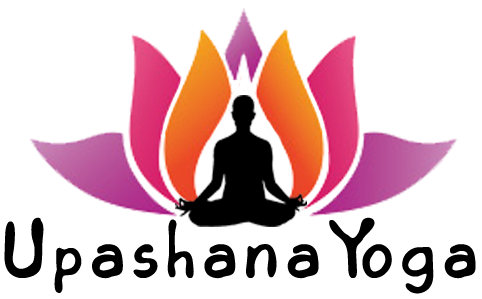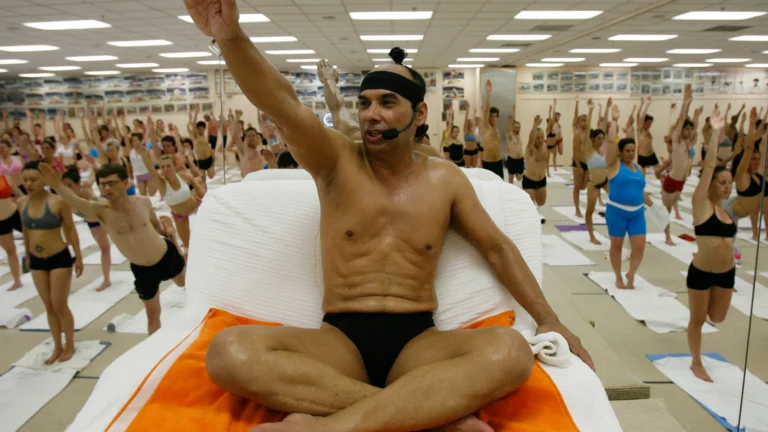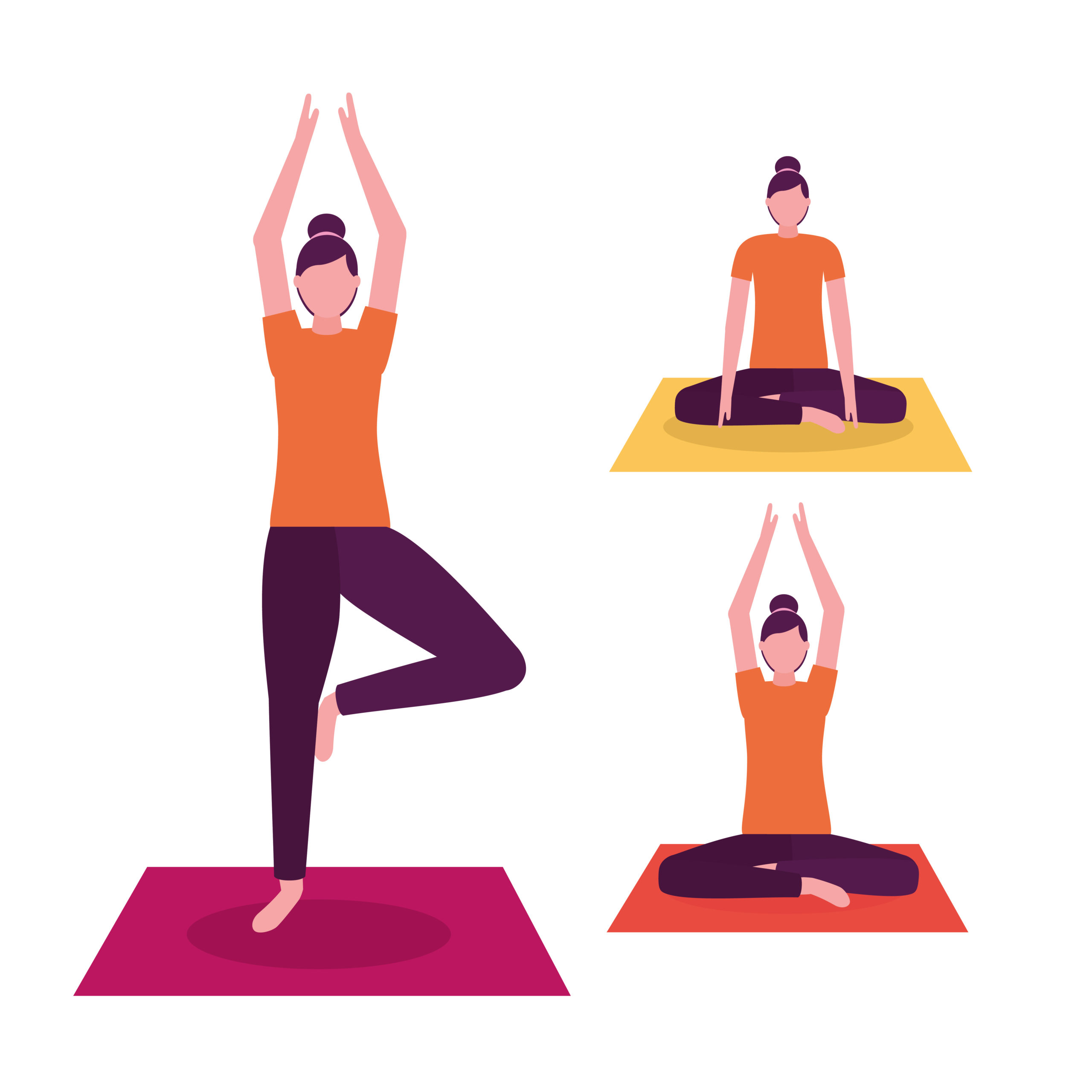
Restorative Yoga is a gentle, calming, and therapeutic style of yoga that emphasizes deep relaxation, stress relief, and nervous system healing. It’s ideal for all levels and especially beneficial for people dealing with anxiety, burnout, chronic pain, fatigue, or recovery from illness or injury. Below is a comprehensive guide to everything you should know about Restorative Yoga:
What is Restorative Yoga?
Restorative yoga is a slow-paced practice that uses props (such as bolsters, blankets, and blocks) to support the body in poses held for extended periods, 5 to 20 minutes or more. Unlike other active styles of yoga, there is no stretching, straining, or muscular effort involved. The goal is to completely relax the body, allowing the nervous system to reset and promoting deep healing.
Origins and Philosophy Of Restorative Yoga:
Popularized by B.K.S. Iyengar and his student Judith Hanson Lasater, Restorative Yoga evolved from the therapeutic applications of Iyengar Yoga. Rooted in the idea that stillness and rest are as important as movement, it helps shift the body from the sympathetic nervous system to the parasympathetic nervous system. In this state, the body can focus on healing, digestion, and renewal.
(Also Read: Best And Effective Facial Yoga For Slim Face )
Core Characteristics of Restorative Yoga:
1. Passive and Supported Poses:
Restorative yoga uses minimal muscular effort. Poses are designed to be fully supported using props like bolsters, blankets, and blocks. This passive approach allows muscles to relax completely, enabling the body to enter a healing state.
2. Extended Pose Duration:
Each pose is typically held for 5 to 20 minutes, sometimes even longer. The long holds allow the nervous system to deeply relax and the connective tissues to open gently. Fewer poses are practiced in a session, usually 4 to 6 poses per class.
3. Deep Relaxation Focus:
The primary goal is total physical, mental, and emotional relaxation. There’s no stretching, sweating, or exertion, only calm and stillness. Practitioners are encouraged to surrender to the pose and let go of control.
4. Heavy Use of Props:
Props are essential to support the body and maintain comfort in long-held poses. Common props include: Bolsters, blankets, blocks, straps, eye pillows, and sandbags. These props help reduce strain and encourage maximum ease and safety.
5. Breath Awareness:
Though the breath is not forced, gentle breath awareness is often guided to enhance relaxation. Deep, natural breathing supports activation of the parasympathetic nervous system, promoting rest and repair.
6. Minimal Movement and Transitions:
The practice involves slow, mindful transitions between poses. Movements are kept minimal to maintain a calm and meditative state throughout the session.
7. Calm and Quiet Environment:
Restorative yoga thrives in a soothing setting, dim lighting, silence or soft music, and minimal external stimulation. The environment is intentionally designed to foster inner stillness and safety.
8. Introspective and Meditative:
Encourages inward attention, mindfulness, and self-inquiry. Practitioners often report emotional release, mental clarity, or insight during or after sessions.
9. Trauma-Sensitive and Accessible:
Restorative yoga is inclusive and safe for most bodies, including those healing from trauma, illness, or injury. It emphasizes non-judgment, patience, and compassion toward oneself.
(Also Read: What Are The Jal Neti Benefits And Disadvantages?)
Benefits of Restorative Yoga:
Restorative Yoga offers a wide range of physical, mental, emotional, and spiritual benefits, making it one of the most healing and accessible forms of yoga. It’s slow-paced, supported poses and deep relaxation techniques work on both the body and mind, creating a profound sense of well-being. Below is a detailed breakdown of the key benefits of Restorative Yoga:
Restorative Yoga Supports the Body’s Healing Process:
Activates the parasympathetic nervous system (rest-and-digest mode), which promotes cellular repair, digestion, and immune function. Useful in recovery from illness, injury, surgery, or chronic fatigue. Enhances the body’s natural healing capacity without the stress of physical exertion.
Improves Sleep and Fights Insomnia:
Helps calm an overactive nervous system and reduce nighttime anxiety. Encourages deeper, more restful sleep by slowing down heart rate and quieting the mind.
Restorative Yoga Relieves Muscle Tension and Chronic Pain:
Gently stretches and releases tension from muscles and fascia without causing strain. Helps manage chronic conditions like fibromyalgia, arthritis, and lower back pain.
Restorative Yoga Improves Circulation and Organ Function:
Deep breathing and relaxed poses improve oxygen flow, blood circulation, and lymphatic drainage. Certain poses support organ detoxification.
Restorative Yoga Lowers Blood Pressure and Heart Rate:
Promotes cardiovascular health by reducing physiological markers of stress, such as cortisol levels and inflammation. Especially beneficial for those with hypertension or heart-related conditions.
Restorative Yoga Reduces Stress and Anxiety:
Restorative yoga helps quiet the mind and bring awareness to the present moment. Encourages a deep sense of calm, grounding, and emotional balance.
Restorative Yoga Enhances Mental Clarity and Focus:
The stillness of the practice allows the brain to unwind and reset, improving mental clarity, decision-making, and memory.
Restorative Yoga Supports Emotional Release:
Deep relaxation and long-held poses can unlock trapped emotions or suppressed feelings in a safe, gentle way. Promotes emotional resilience by allowing space for self-reflection.
Eases Symptoms of Depression and Burnout:
Provides a supportive, low-pressure space for self-care. Restorative Yoga can help regulate mood and bring a sense of purpose or peace to those experiencing emotional exhaustion.
Restorative Yoga Balances the Energy Body:
Encourages a smoother flow of prana (life-force energy) through the body, especially in subtle energy channels and chakras. Specific poses and breath awareness help unblock or balance energetic centers.
Restorative Yoga Deepens Self-Awareness and Intuition:
The meditative nature of the practice invites a deeper connection with the inner self. Encourages stillness, introspection, and spiritual openness.
Restorative Yoga Cultivates Mindfulness and Presence:
Slowing down helps cultivate a mindful awareness of body, thoughts, and emotions—key to emotional intelligence and spiritual growth.
Restorative Yoga Elevates Sustainable Self-Care:
A gentle but powerful form of self-nourishment that fits into even the busiest of lives. Builds a routine of intentional rest and self-compassion.
Restorative Yoga Inclusive and Accessible:
Ideal for all ages, body types, and fitness levels—including seniors, pregnant women, and those with limited mobility. No prior yoga experience is needed.
(Also Read: Yin Yoga: A Deep Dive into its Principles, Benefits, and Practice)
Common Props Used In Restorative Yoga:
Common Props Used in Restorative Yoga are essential to support the body in passive poses, allowing for complete relaxation without muscular effort. These props enhance comfort, ensure alignment, and help the practitioner remain in poses for extended periods (5–20 minutes or more). Here’s a detailed guide to the most commonly used props:
1. Bolster:
-
Purpose: Supports the spine, hips, chest, or legs.
-
Use: Placed under the knees in Savasana, beneath the back in Reclined Bound Angle Pose, or lengthwise to open the heart.
-
Benefit: Provides soft yet firm support that allows the body to release tension and rest deeply.
2. Blankets:
-
Purpose: Add softness, warmth, height, and gentle weight.
-
Use: Folded for support under the head, hips, knees, or used as a light cover to retain body heat.
-
Benefit: Versatile and adaptable; excellent for comfort and fine adjustments in posture.
3. Yoga Blocks:
-
Purpose: Provide structure and elevation for various parts of the body.
-
Use: Under hands, hips, or knees to ensure alignment and reduce strain.
-
Benefit: Helps bridge the gap between the body and the floor, especially for beginners or those with limited flexibility.
4. Straps (Yoga Belts):
-
Purpose: Secure limbs in place, reduce muscular effort, and maintain alignment.
-
Use: Around the feet in legs-up-the-wall pose or to hold feet together in Reclined Bound Angle Pose.
-
Benefit: Helps maintain passive stretch and alignment without exertion.
5. Eye Pillows:
-
Purpose: Block out light and provide gentle pressure to the eyes.
-
Use: Placed over closed eyes during Savasana or meditation.
-
Benefit: Induces a deeper sense of calm and relaxation, activates the parasympathetic nervous system.
6. Sandbags (Weighted Props):
-
Purpose: Apply light, grounding pressure to specific parts of the body (e.g., thighs, abdomen, feet).
-
Use: Placed on the thighs in reclining poses or over the belly to deepen breath awareness.
-
Benefit: Enhances the feeling of being grounded and anchored, promoting emotional release and physical relaxation.
7. Chairs:
-
Purpose: Used for seated or supported reclining poses, especially in chair-based or therapeutic yoga.
-
Use: For legs-up-on-the-chair pose, forward bends with the head resting on the seat.
-
Benefit: Provides accessibility for people with limited mobility or flexibility.
8. Wall Space:
-
Purpose: Acts as a support surface in poses like Legs-Up-The-Wall (Viparita Karani).
-
Use: Used to rest the legs vertically, support the spine, or aid in gentle inversions.
-
Benefit: Deeply relaxing for the nervous system and ideal for improving circulation.
9. Yoga Mat:
-
Purpose: Provides a clean, non-slip, and cushioned surface for the practice.
-
Use: The foundation for all poses and prop arrangements.
-
Benefit: Ensures comfort and stability during transitions and holds.
(Also Read: Power Yoga: A Complete Guide to Practice, Benefits, and Key Poses)
Typical Restorative Yoga Poses:
Here’s a detailed guide to Restorative Yoga Poses—gentle, supported postures designed to release tension, calm the nervous system, and promote deep healing. Each pose is typically held for 5–20 minutes, often using props like bolsters, blankets, and blocks to support total comfort.
Child’s Pose or Balasana:
Purpose: Grounding, calming, and gently stretching the lower back.
How to Practice:
- Kneel on the mat with big toes touching and knees apart.
- Place a bolster or stacked blankets lengthwise between your knees.
- Fold forward and rest your torso and head on the bolster, turning your head to one side (switch halfway through).
- Arms can rest forward or alongside the body.
Benefits:
-
Calms the mind, relieves fatigue and anxiety, and gently stretches the hips and back.
Legs-Up-The-Wall Pose or Viparita Karani:
Purpose: Reverses blood flow, reduces swelling in the legs, and calms the mind.
How to Practice:
- Sit sideways next to a wall, then swing your legs up and lie back with your hips near the wall.
- Use a folded blanket or bolster under your hips for support if desired.
- Arms rest at your sides, palms up.
Props: Blanket, bolster, eye pillow (optional)
Benefits:
-
Eases tired legs, supports venous circulation, and lowers stress hormones.
Supported Reclining Bound Angle Pose or Supta Baddha Konasana:
Purpose: Opens the hips and chest, deeply relaxing.
How to Practice:
- Lie back on a bolster or blanket placed lengthwise under your spine.
- Bring the soles of your feet together and let your knees fall outward.
- Place blocks or blankets under your knees for support.
- Hands rest by your sides or on your belly.
Props: Bolster, 2 blocks or blankets
Benefits:
-
Opens hips and heart, relieves menstrual or digestive discomfort, calming for anxiety.
Reclining Twist or Supta Matsyendrasana:
Purpose: Releases spinal tension and stimulates digestion.
How to Practice:
- Lie on your back, hug both knees to your chest.
- Drop both knees to one side, extending the opposite arm out.
- Place a bolster or blanket under the knees if needed.
- Turn your head in the opposite direction from your knees.
Props: Blanket or bolster under knees
Benefits:
-
Eases tension in the back, massages internal organs, and aids in detoxification.
Supported Savasana or Corpse Pose:
Purpose: Ultimate relaxation, integration of the practice.
How to Practice:
- Lie flat on your back.
- Place a bolster under the knees, a blanket under the head/neck, and cover yourself with a blanket.
- Use an eye pillow for added relaxation.
Props: Bolster, blankets, eye pillow
Benefits:
-
Deep mental and physical rest helps absorb the benefits of yoga, resets the nervous system.
Supported Forward Fold or Paschimottanasana:
Purpose: Gently stretches the back body and calms the mind.
How to Practice:
- Sit with legs extended, knees slightly bent if needed.
- Place a bolster or several blankets on your legs.
- Fold forward and rest your torso and head on the props.
Props: Bolster, blanket
Benefits:
-
Soothes the nervous system, improves flexibility passively, great for stress and fatigue.
Supported Bridge Pose or Setu Bandhasana:
Purpose: Opens the chest and hips gently, activates rest-and-digest response.
How to Practice:
- Lie on your back, bend your knees, and place your feet hip-width apart.
- Lift the hips and place a block or bolster under your sacrum.
- Let your hips rest on the prop and relax your body.
Props: Block or bolster
Benefits:
-
Stimulates abdominal organs, relieves mild depression, reduces fatigue and headaches.
(Also Read: Ashtanga Yoga: A Complete Guide to Practice, Benefits, and Key Poses)
How to Practice Restorative Yoga?
Restorative Yoga is not about flexibility, strength, or physical challenge—it’s about creating space for the body and mind to rest deeply and restore balance. The more you practice, the more attuned you’ll become to your inner state, needs, and capacity for healing.
Set Up a Comfortable Environment:
- Choose a quiet, low-lit space where you won’t be disturbed.
- Use a yoga mat, soft rug, or carpeted floor.
- Have essential props nearby: bolsters, blankets, blocks, straps, eye pillows, and a timer.
- Consider playing soft instrumental music or ambient sounds if it helps you relax.
Prepare Your Mind and Intention:
- Sit quietly for a few moments and take a few slow, deep breaths.
- Set a clear intention for your practice, such as “I allow myself to rest” or “I release stress.”
- Let go of any performance goals. In restorative yoga, less is more.
Choose 3–5 Poses to Practice:
- Select a few gentle, supported poses (e.g., Child’s Pose, Legs-Up-the-Wall, Reclining Bound Angle, Supported Savasana).
- Each pose should be held for 5–20 minutes.
- Use props generously—you should feel completely supported and comfortable, with no strain or stretch.
Use Props to Eliminate Effort:
Props are central to restorative yoga. They allow you to relax without engaging muscles.
Common props:
- Bolsters for back and knee support
- Blankets for cushioning or warmth
- Blocks for alignment and lift
- Straps to hold limbs in position without effort
- An eye pillow or scarf to block light and induce calm
Hold Poses for Extended Time
- Use a timer to track your hold without distraction.
- Stay in each pose without moving, letting the body settle more deeply over time.
- Focus on natural breath—no effort needed to control it.
Practice Mindful Breathing:
- Let your breath be soft, slow, and natural.
- You can also explore breath awareness techniques like:
- 3-Part Breath (Dirga Pranayama)
- Belly breathing
- Equal breathing (Sama Vritti)
Allow for Stillness and Surrender
-
If your mind wanders, gently bring your focus back to your breath or body sensations.
-
Avoid fidgeting or adjusting unless necessary.
-
Embrace complete stillness and still awareness—the essence of the practice.
Transition Out Gently:
- When your timer ends, move slowly out of the pose.
- Roll to your side or return to seated gradually, pausing to notice how you feel.
- End the session with a short meditation or simply sit quietly for a few minutes.
(Also Read: Vinyasa Yoga: A Complete Guide to Practice, Benefits, and Key Poses)
Who is Restorative Yoga For?
Restorative Yoga is ideal for:
- Beginners or anyone new to yoga
- People recovering from injury or surgery
- Individuals with anxiety, burnout, or chronic stress
- Older adults and pregnant women (with modifications)
- Anyone seeking deep rest, healing, and introspection
Conclusion:
Restorative Yoga is more than a yoga practice—it is a healing sanctuary. In a world that glorifies hustle and productivity, it offers a sacred pause. It reminds us that rest is not a luxury but a necessity, and that deep healing happens when we surrender.
Whether you’re a seasoned yogi or just seeking peace from a busy life, Restorative Yoga invites you to slow down, let go, and return to yourself.















Leave a Comment